Sexy & Sultry – Belly button piercing is one of the sexiest accessories a woman can wear!
Today, this piercing is one of the most trendy and popular body piercing that girls and women are going for. There are many types of piercing, such as nose piercing, ear piercing, eyebrow, and so many other types of piercing that looks gorgeous and beautiful. However, there is something so amusing and magical about belly piercing that everyone is crazy about.
One of the best things about this type of piercing is that you can wear so many different pieces of jewelry and show it off. Just wear a crop top or tie a knot in a t-shirt at the front to show off your gorgeous belly piercing, or just cover it up for formal settings!
You will also get a wide range of jewelry and material options, from curbed barbells to dangles and gold to diamonds. You can wear your belly button jewelry every day or remove it when you feel so.
No matter how good these belly button piercings may look, they can also be problematic!
Yes, you’ve read it right!
With any type of modification, it is always best to do the research and get all the knowledge about it before making the final decision.
Are you planning to get the belly button piercing? Or recently get one?
If your answer is YES, you need to educate yourself about belly button piercing.
We’re here to give you all the required information about belly piercings. From what exactly is belly button piercing and its types to aftercare and side effects of this, we’ve covered everything. We’ve also included some of the best belly piercing jewelry ideas for you at the end. So, keep reading till the end and get all the required information before getting a belly piercing.
Let’s dive in.
- What Is a Belly Button Piercing?
- Belly Button Piercing Types
- Belly Button Piercing Procedure
- Pain and Healing Time of Navel Piercing
- Belly Button Piercing Aftercare
- Side Effects of Belly Button Piercing
- Not Get a Belly Button Piercing If…
- Different Styles of Jewelry for Belly Button Piercing
- Belly Button Piercing Jewelry Material
What Is a Belly Button Piercing?
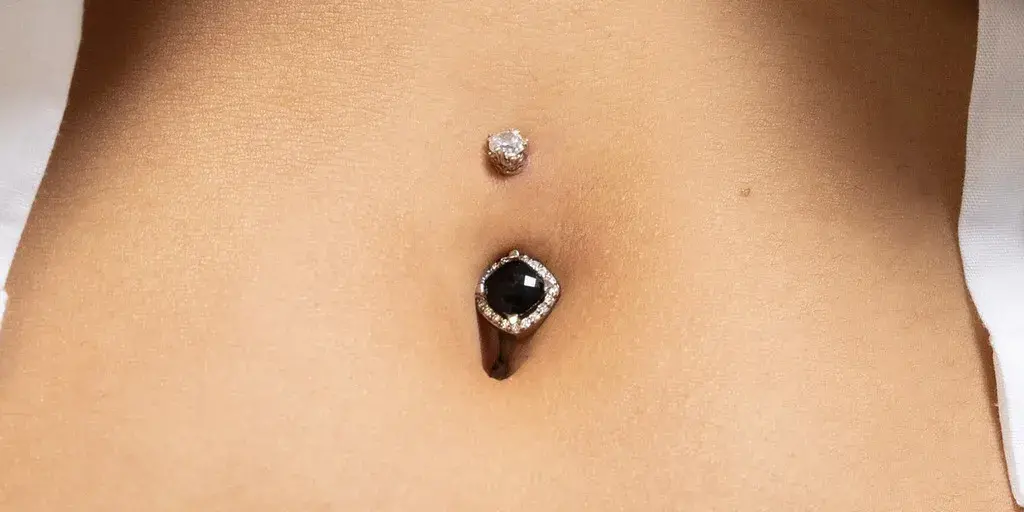
A belly button piercing, sometimes also referred to as a navel piercing, is a type of piercing situated around or through the skin of the navel. Here a piece of jewelry is inserted on the upper fold of the skin, which is directly above the belly button.
Apart from the upper cusp of the navel, there are other placements of belly button piercings as well, such as the lower rim, upper rim, and sides of the navel.
Belly Button Piercing Types
A belly button piercing can be pierced at different angles and places around the navel.
Here are some of the most popular types of belly button piercings:
- Standard Belly Piercing
- Double Belly Piercing
- Floating Navel Piercings
- True Navel (Outie) Piercing
- Bottom belly button piercing (inverse navel piercing)
- Belly button dermal piercings
- Deep Navel Piercing
- Horizontal Belly Button Piercing
- Multi-Navel Piercing
- Stretched Belly Button Piercing
Belly Button Piercing Procedure

No matter what type of navel piercing you’re getting, a professional piercer always does these piercings with tools or freehand.
Here’s what the entire process looks like
- First, the entire belly button area will be cleaned properly.
- If you have any small hairs in the area, the piercer will shave the area with a razor. This is an important step to get smooth skin for a clear piercing.
- After this, the desired belly button area where you want to get a piercing is clamped with a tool.
- Piercer can also mark the area or at the correct spot.
- A piece will now take a hollow needle and push through the skin to create a hole.
- After making a hole, a piece of jewelry will be placed, and that’s it!
You may also experience slight bleeding, swelling, or redness immediately after getting a navel piercing. Don’t worry about it, as it is quite common and will subside quickly.
Pain and Healing Time of Navel Piercing
No matter what type of piercing you get on which part of the body, it will hurt! The same thing goes for belly button piercing! So if your friends or the piercer will tell you that it wouldn’t hurt, that’s not the case – It will hurt slightly!
The skin around the stomach is sensitive but fleshy, so it might not hurt much compared to cartilage piercings. However, a needle will be inserted through the skin to get this piercing, so of course, you will feel belly button piercing pain, which will also depend on your pain tolerance power.
So, how much time does a belly button piercing take to heal?
A navel piercing usually takes anywhere from six months to one year to completely heal.
Belly button piercing healing time will also depend on how well you care for it and your daily lifestyle. If you take care of it well, it can easily heal in 6 to 8 months.
Belly Button Piercing Aftercare
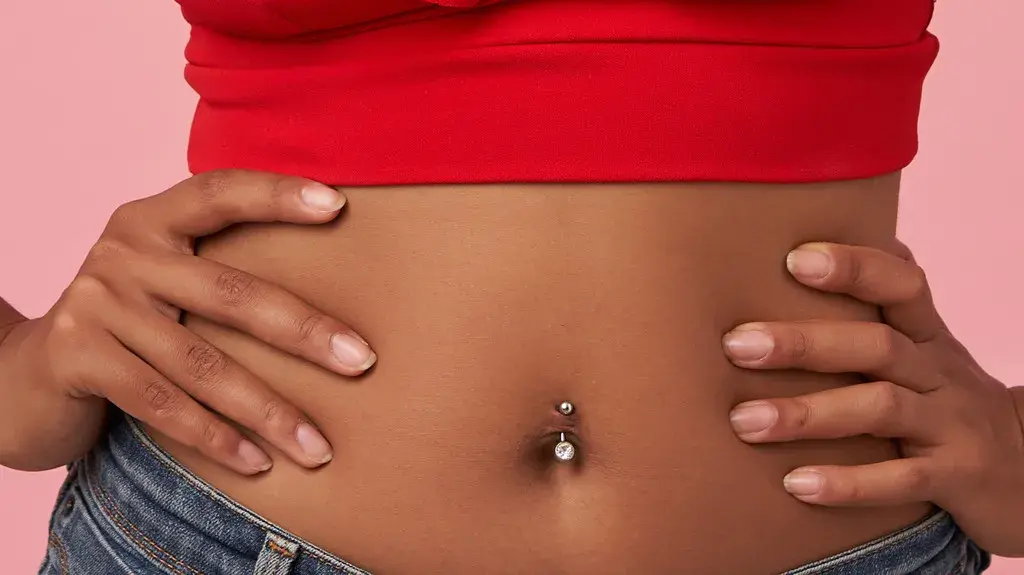
To heal your piercing properly and fast, it’s important to follow a correct aftercare process. Here are the aftercare things you’ll need to do after getting a navel piercing:
- Always make sure to wash your hands before touching your piercing. Don’t let anyone else touch it until the piercing is completely healed.
- Keep it clean and swap it with a sterile saline solution at least twice daily to avoid infection.
- Don’t clean too much. Rinse and dry the area with a paper towel or bath towel.
- New piercings have white or yellow-colored fluid (not pus) to form; it is common. You may feel itchy or tight and still don’t pick at it. Picking it can cause the area to bleed, and this can cause infection.
- Avoid putting anything on your piercing, such as lotions, oil, and perfume. You should also not apply antibacterial cream and hydrogen peroxide unless your doctor says so. These products may slow the healing process.
- Wear clean, loose, and soft clothes until your belly button piercing does not get fully healed. Clothes that are tight around the belly area can rub against your piercing which is not good. You can also use a stretchy, elastic bandage to hold an eye patch to cover and protect your belly button.
- Avoid hot tubs and stay away from pools and lakes. The water can cause serious infection.
- Cover your piercing to avoid the sun to prevent sunburns.
- Avoid wearing charms or dangly jewelry in your belly button piercing as they can easily get pulled, which can tear your skin.
NOTE:
Apart from these aftercare essentials, you also have to look for the signs of infection. If you feel any redness, swelling, yellow or green discharge, or pain around the piercing, you should first consult your piercer. If you have a mild fever and other symptoms, contact your doctor.
Side Effects of Belly Button Piercing

Many people get piercings every day and don’t face any serious issues. However, there are some belly button piercing risks.
You could have:
- Rash: You can have a rash on the skin around the piercing due to irritation of the jewelry. If you feel it wasn’t there before and is painful, consult a doctor.
- Discharge: After having your piercing done for the first time, it is normal to leak some off-white fluid for a couple of days. However, if fluid discharge keeps coming on and it changes its color from off-white to a murkier yellowish hue, it might be a sign of infection.
- Infection: If you don’t get a piercing done right or don’t follow the correct aftercare, there are high chances of getting skin infections. If you feel that the area around your piercing has redness, swelling, and hot to touch with sharp pain, you might get infected. So, at this point, contact your doctor right away.
Not Get a Belly Button Piercing If…

You should never get a belly button piercing if you have
- Diabetes
- Hemophilia
- An autoimmune disorder
- Heart problems
These health issues can make the piercing hard to heal as your body is sensitive and might not handle the reaction after you get a belly button piercing. You can talk and get advice from your doctor if you have the following:
- Rash, open sore, moles, or any other skin condition around your belly button.
- If you’re skinny, overweight, or pregnant.
Now you know all the basic information and aftercare for navel piercing. So, if you made your decision and want to get it, let’s move on to the jewelry ideas.
Different Styles of Jewelry for Belly Button Piercing

Below are some of the popular and trendy types of belly button piercing jewelry:
Curved Barbell
A curved barbell is an extremely widely popular option for belly button piercings among girls and women of all ages. This jewelry is slightly curved outward to pop against the belly button. This looks and fits perfectly with most natural body shapes. It also has a beautiful bead or stone at each end from which you can easily adjust or remove your piercing whenever you want.
Twister Spiral
Twister spiral jewelry is a bit curved in both directions. This is why many girls want to try this type of fun-looking jewelry, which makes the piercing look cooler. Apart from its looks, this type of twisted spiral jewelry puts less stress on the navel area.
Captive Bead
To get this jewelry for your belly piercing, you need to get it in the right size! There are 14- and 16-gauge sizes available for this particular style. Get the one that hugs the navel right and looks great on your belly button.
Reverse/Top-down
People who like to show a reverse/top-down jewelry style can go with this style. This one has the big piece of jewelry shown outside; the rest will be inside your belly button. You can wear this jewelry in two ways: top-down or reverse!
Dangle
If you get a belly button piercing, it’s obvious that you also want to show off. For that, dangle jewelry will be a great option. This one has a curved barbell with adornments hanging off the end of the ring.
Non-dangle
If you have an active lifestyle or you don’t like big, chunky piercing jewelry, you can go with non-dangle ones. These types of dangle jewelry remain closer to the belly button and have a drop, hinge, or curved barbell. It gives a minimal and classy belly button piercing look.
Belly Button Piercing Jewelry Material
Today, many materials are available for navel piercings. Here are some of the best materials for belly button rings:
- Surgical biomedical stainless steel
- Silver titanium
- Gold
- Implant-Grade Stainless Steel
- Hypoallergenic plastic BioFlex
- Sterling silver.

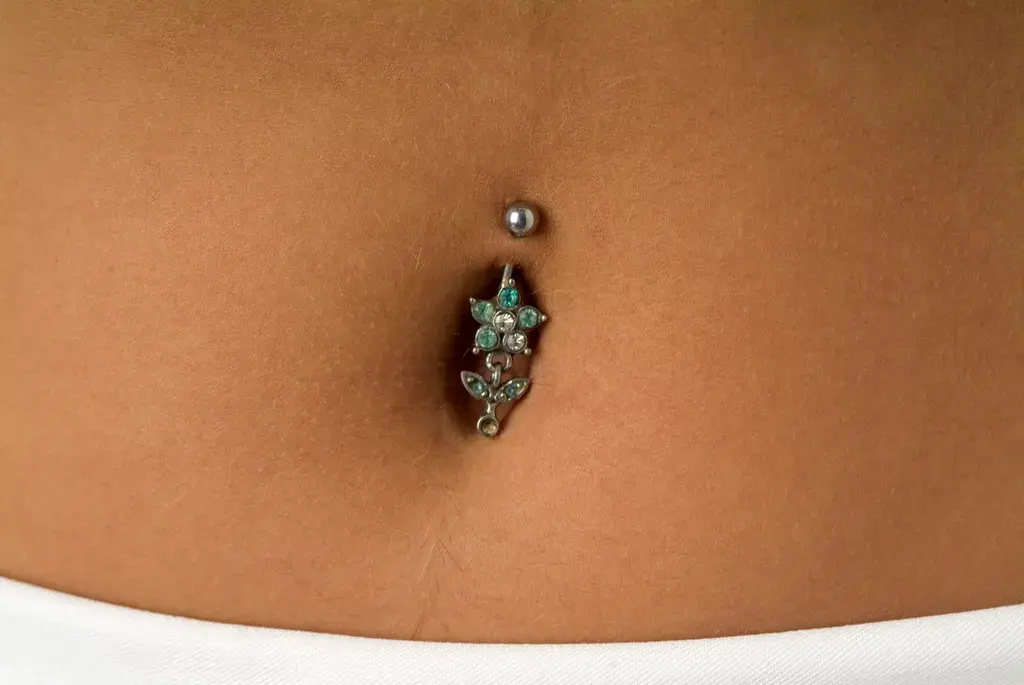

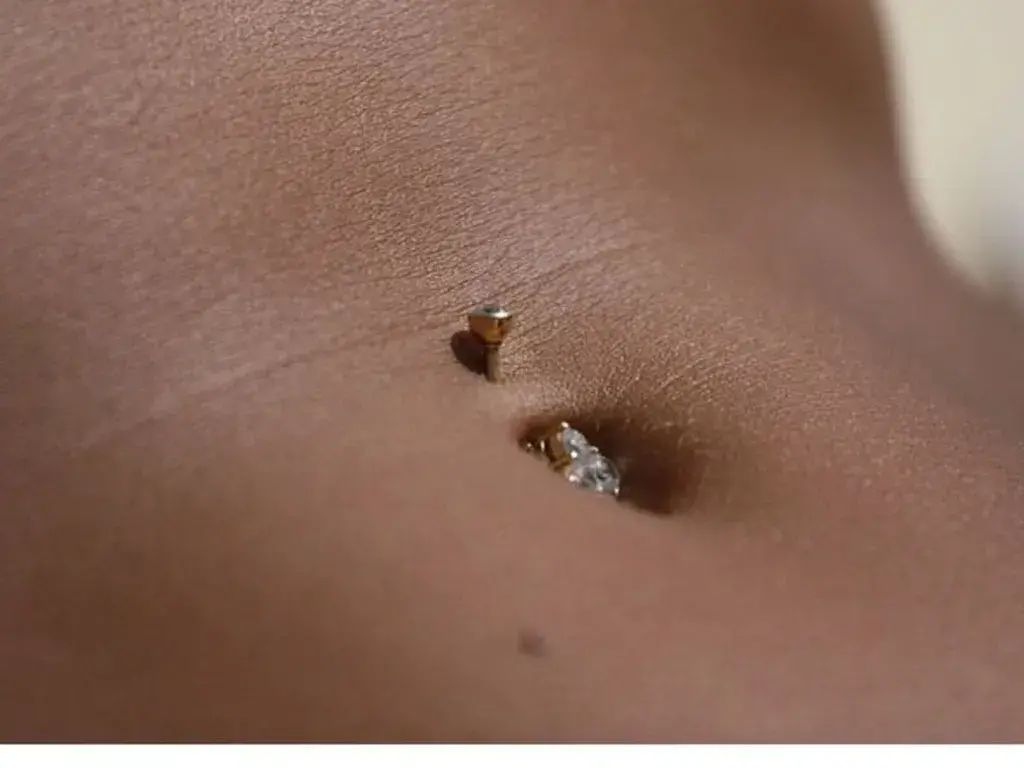

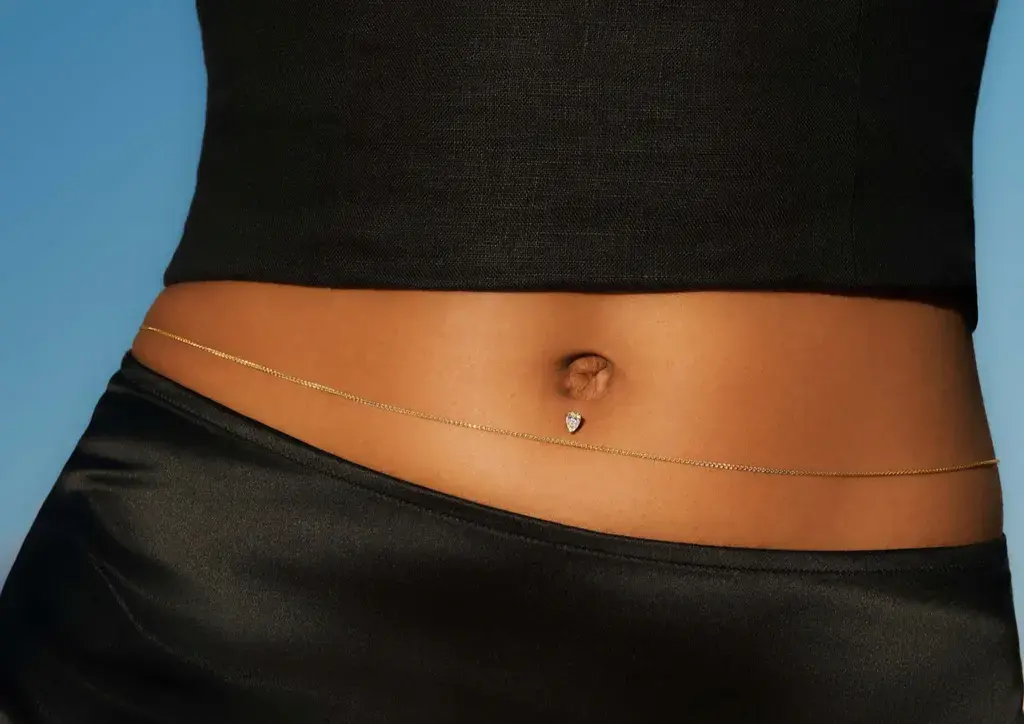
Conclusion
So, this is all about belly button piercing. Belly piercings look great and wonderful, and you can flaunt them in so many ways. However, getting one isn’t a challenging task. The most difficult thing to do is to take care of it afterward. You have to keep the piercing area clean and infection free.
I hope this guide on belly button piercing care and jewelry ideas has given you some inspiration. Share this blog with your friends and family who want to get a belly button piercing.
Find out more: